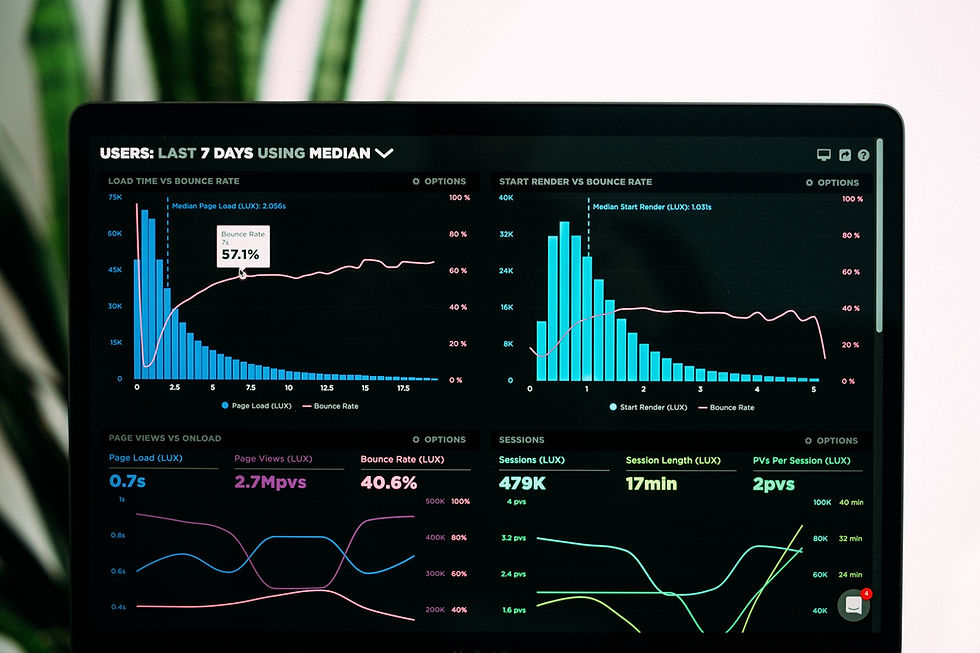What is Business Intelligence?
- Teamworks

- Jan 20, 2022
- 4 min read
Updated: Mar 18, 2022

The definition of Business Intelligence involves using data to make business decisions.
Simple enough, right?
In many ways, there is nothing new about business intelligence. Business leaders have always used data to make decisions about everything – from targeting their marketing efforts to optimizing their supply chain processes to improving their overall customer experience.
However, what is new is the impact our digital-first world has had on the practice of business intelligence and its application.
Business Intelligence Then vs. Business Intelligence Now
Previously, the data business professionals used was gathered by many different people and then deposited into multiple digital formats.
Then, multiple employees would be responsible for hunting down this data and doing what they could to turn it into actionable information and insights. The major problem with all of this is the manual nature of it.
Data found on papers, receipts, and invoices could be entered into systems incorrectly. Data could be missed or forgotten altogether. And then these different data systems don’t speak to one another. Therefore, no connections are made.
Things are different now.
Much of the record-keeping that was previously done on paper can now be handled in powerful applications, and many different components of data entry, accumulation, and processing can all be done within the same applications.
As a result, companies are using data management best practices to collect and analyze more data than ever before – and in a more powerful way than ever before.
Related Content: How is Business Intelligence used in the real-world?
What Is the Meaning of Business Intelligence?
Business Intelligence means mining big data, organizing it into easy-to-read visuals, and analyzing it to make data-driven decisions. However, the wealth of data available to your business makes Business Intelligence both more difficult to implement and more essential to success.
But what does this actually mean? Let’s break it down.
When we speak about Business Intelligence in the modern day, what we’re really speaking about is the use of specialized software applications that do all the hard work for you. These software solutions gather data from a variety of digital sources and then instantaneously organize that data in a meaningful and actionable way for the user.
Since these solutions are typically easy to implement and cost-effective, companies are finding themselves bringing in more data than they may know how to handle. And chances are, good insights go unseen.
For example, you may use one tool to onboard new employees, another tool to train new employees, and another tool to track performance. But are these tools speaking to each other, cross-analyzing data, and providing powerful Business Intelligence? Maybe, maybe not.
If they were, maybe you would know that it takes an average of six months for a new employee to become fully productive, or maybe you would know that one job site has a shorter onboarding process, yet more productive employees overall.
You see, Business Intelligence isn’t just about collecting and organizing the data. The power of BI exists within analytics. Business Intelligence doesn’t just make data collection easier; it uncovers problems, sheds light on new trends, and serves as a test run for decision making.
Ready to get started with business intelligence? Learn how to develop a business intelligence strategy.
How Can Business Intelligence Help Your Company?
If you’re like many companies, you’ve likely invested in a variety of digital solutions to reduce paperwork and streamline operations – but the data within all that software probably goes unused outside of its respective departments.
Even if one department manager finds an actionable insight with all their data, they may not communicate this to other departments. As a result, they could end up hurting the company with changes (or a lack of changes) and not even realize it.
This is where Business Intelligence comes in.
With the right Business Intelligence tool, you can make all of your company’s data talk to each other and easily accessible within a single application. This means you can see how seemingly disparate data influence each other.
What does this look like in the real world? Here are some common examples of Business Intelligence:
Combine attendance tracking with employee performance monitoring and payroll to identify which employees are due for an upcoming raise.
Use predictive analysis to determine manufacturing goals for the next quarter.
Integrate your CRM solution with your sales platform to figure out which customers are costing you more revenue than they are generating.
Make sure your hiring process works hand-in-hand with your payroll and HR solutions to guarantee no steps are forgotten along the way.
Interested In Learning More About Business Intelligence?
At Teamworks, we work with businesses of all shapes and sizes to help them create powerful information out of their data. With custom BI solutions, we can integrate multiple solutions into a customized BI dashboard and enable companies to be more strategic and cost-effective.
If you’re interested in learning more about how Business Intelligence can help your company, schedule a free demonstration with our team or check out these additional business resources:




Comments